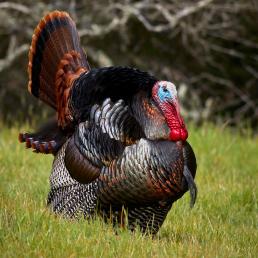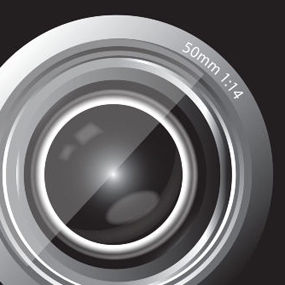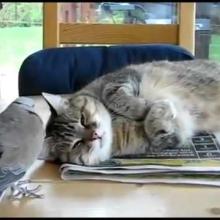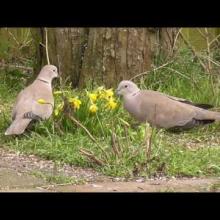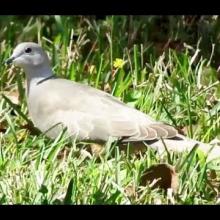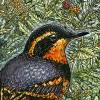

Join BirdNote tomorrow, November 30th!
Illustrator David Sibley and actor H. Jon Benjamin will face off in the bird illustration battle of the century during BirdNote's Year-end Celebration and Auction!
In 1974, Eurasian Collared-Doves escaped from captivity in the Bahamas and began to breed in the wild. Soon, they colonized southern Florida. They began expanding in a northwesterly direction, and by the year 2000, they had arrived in the Pacific Northwest. They thrive where backyard trees offer nesting and roosting sites, they like to perch on utility poles, and they gladly eat at birdfeeders. Coming soon, to a neighborhood near you! (If they're not there already...)
BirdNote®
Eurasian Collared-Doves — They Have Arrived
Written by Bob Sundstrom
This is BirdNote!
[A bit of West Indian music]
Today’s story begins in the Bahamas.
There, in 1974, a bird called the Eurasian Collared-Dove escaped from captivity and began to breed in the wild. [Eurasian Collared-Dove calling] About the size of a slim city pigeon, the Eurasian Collared-Dove is a handsome bird, pale grayish-tan with a slim black collar.
Soon, they flew west from the Bahamas and colonized southern Florida. [Eurasian Collared-Dove calling] Their numbers grew quickly, and by the 1990s, they had expanded their range throughout the Southeast. Now, they began expanding in a northwesterly direction, and by the year 2000, arrived in the Pacific Northwest.
[Eurasian Collared-Dove calling]
Having reached a great many rural towns in Oregon, Washington, and southern British Columbia, the doves will probably fill in north and south. Little seems to stand in the way of them becoming a widespread and permanent element of North American birdlife. They thrive where backyard trees offer nesting and roosting sites, they like to perch on utility poles, and they gladly eat at bird feeders. [Mix of Black-capped Chickadee “chick-a-dee-dee-dee” calls and Eurasian Collared-Dove notes]
This astoundingly rapid range expansion is actually the Eurasian Collared-Doves’ second big move of the last hundred years. Earlier in the 20th Century, they spread from the Middle East all the way across Europe.
Keep an eye on your back yard. If they’re not there yet, they’re on their way.
[Eurasian Collared-Dove calling]
For BirdNote, I’m Mary McCann. [A bit of West Indian music]
###
Call of the Eurasian Collared-Dove provided by The Macaulay Library at the Cornell Lab of Ornithology, Ithaca, New York. Recorded by A. Van den Berg.
Steel Drum music Sister Say Dance by The Toucans. Steel Drums: Old & New vol.2 2005. www.toucans.net
Ambient sounds by Kessler Productions.
Producer: John Kessler
Executive Producer: Chris Peterson
© 2012 Tune In to Nature.org August 2017 Narrator: Mary McCann
ID# 082107EUCDKPLU EUCD-02b
